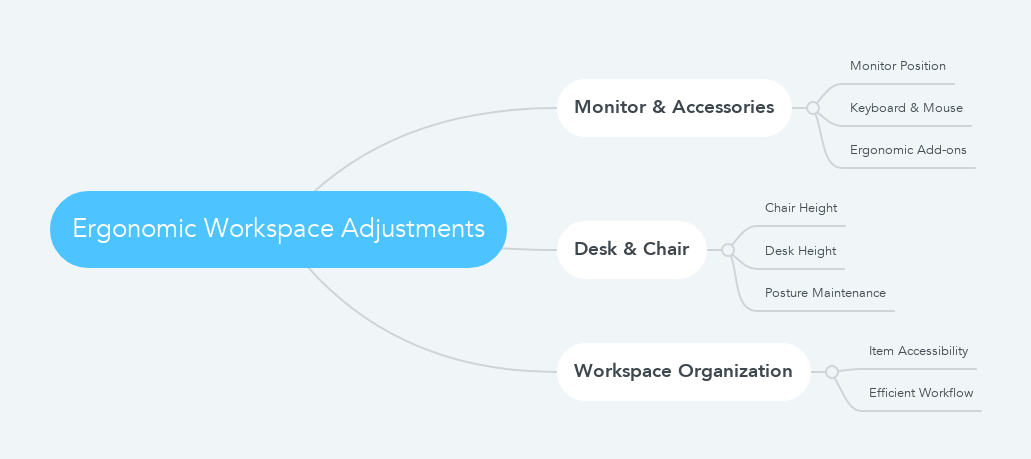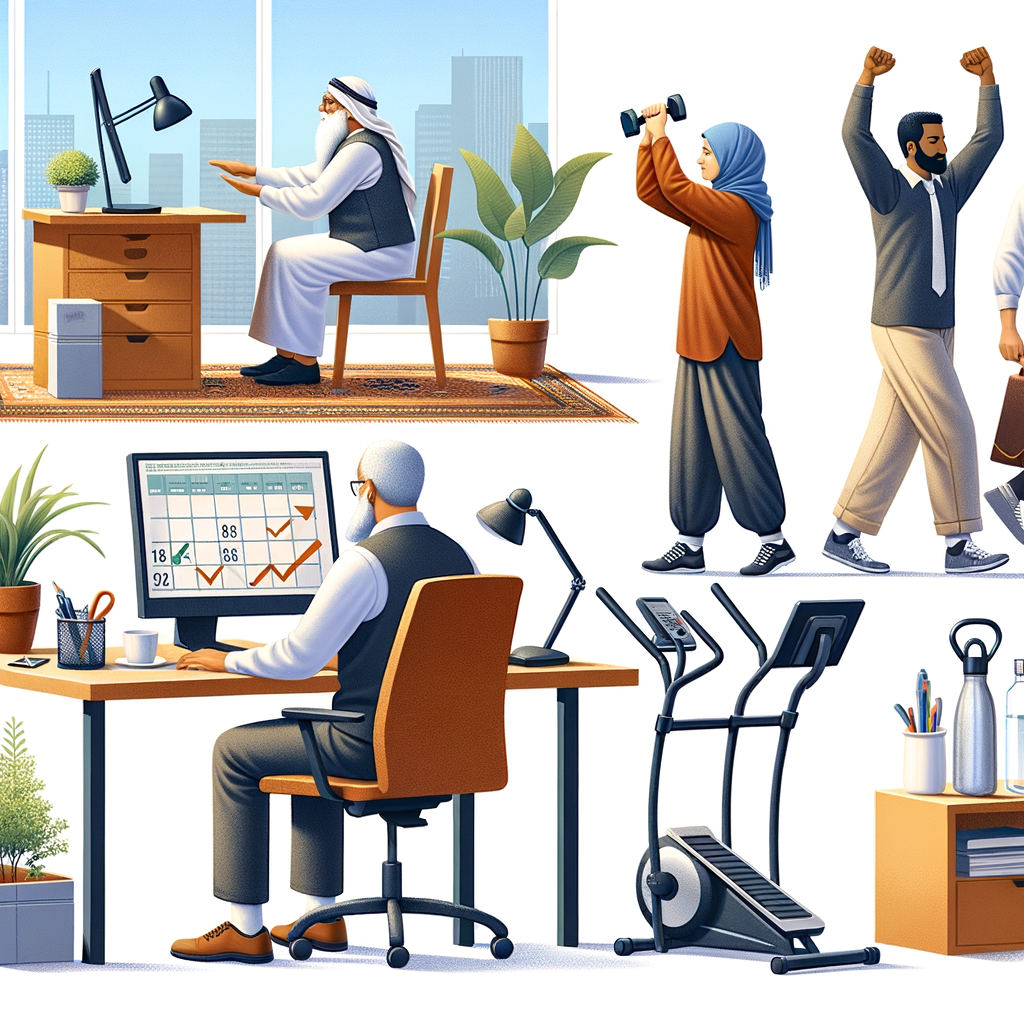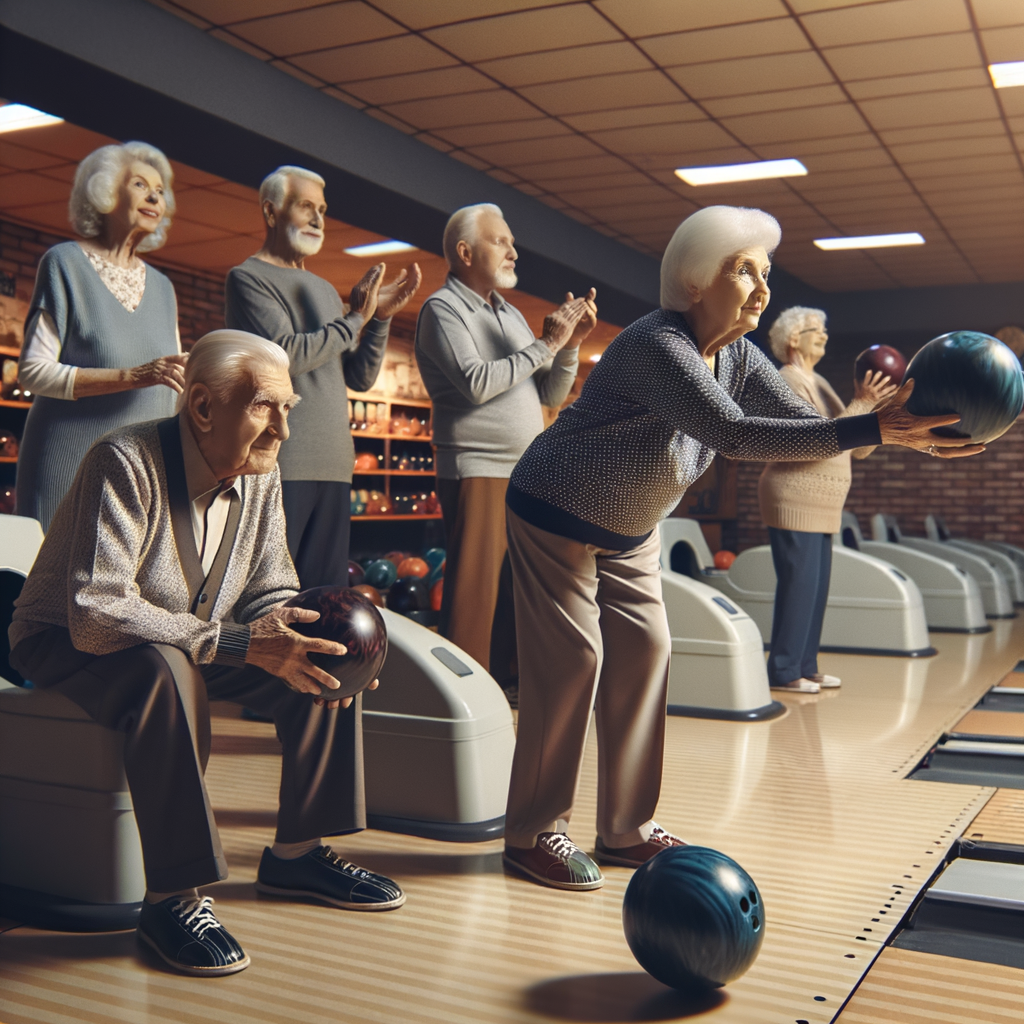Understanding the Risks of a Sedentary Desk Job
Physical Health Risks
First off, let's look at how sitting a lot can harm your body. If you sit for too long, your body doesn't burn as many calories, which can lead to gaining weight and even obesity over time. But there's more. Sitting too much is linked to several health problems. These include metabolic syndrome—a group of issues like high blood pressure, high blood sugar, too much fat around the waist, and bad cholesterol levels—all of which raise your risk of heart disease.
Also, sitting a lot can lead to type 2 diabetes because it's tied to insulin resistance. The chance of getting heart-related problems like heart disease and stroke also goes up. Another issue is blood flow; sitting too long can slow down circulation, leading to problems like deep vein thrombosis (DVT), where clots form in deep veins.
And we shouldn't forget about our bones and muscles. Not moving much weakens bones, making them more likely to break easily—a condition known as osteoporosis.
Mental Health Implications
Now onto mental health, the impact of sitting all day at a desk is just as worrying. Research has shown that sitting too much can make feelings of anxiety and depression worse. This might be because of the isolation that often comes with desk jobs or the physical discomfort from sitting for long periods.
Moreover, there's evidence that sitting too much could be linked to a higher chance of dying earlier than those who live more active lives.
Ergonomic Adjustments for a Healthier Workspace

Desk and Chair Adjustments
Creating a comfortable workspace starts with your desk and chair. The goal is to maintain a posture that feels natural and doesn't strain your body. To do this, adjust the height of your chair so that your feet rest flat on the floor or on a footrest, with your knees at a 90-degree angle. Your desk should be at a height that allows your elbows to also be at a 90-degree angle while typing or writing. This setup helps in reducing discomfort and prevents long-term issues related to poor posture.
Monitor, Accessories, and Workspace Organization
Monitor Positioning
The position of your monitor can greatly affect your neck health. Place the monitor directly in front of you, about an arm's length away, with the top of the screen at or just below eye level. This setup helps in keeping your neck straight and reduces strain.
Keyboard and Mouse Placement
Your keyboard and mouse play a significant role in how comfortable you feel while working. Keep them close enough so you don't have to stretch your arms out to use them. This minimizes strain on your shoulders and arms. Also, ensure that while typing or using the mouse, your wrists remain in a neutral position to avoid discomfort.
Ergonomic Accessories
Consider adding ergonomic accessories like lumbar supports for back comfort, wrist rests to keep your wrists neutrally positioned, and document holders that keep papers at eye level to prevent neck strain from looking down too often.
Organizing Your Workspace
An organized workspace can not only boost productivity but also reduce physical strain. Keep items you use frequently within easy reach to minimize unnecessary stretching or reaching movements. This simple adjustment keeps everything flowing smoothly in your workspace while helping maintain an efficient workflow.
Incorporating Movement into Your Routine

Moving While at Your Desk
Even if you’re stuck at your desk, you can still move around a bit. Start simple: wiggle your toes and move your legs around. This helps stop stiffness and keeps the blood moving. You don’t need fancy gear or lots of room to stretch right at your desk. Stretching your neck, shoulders, back, wrists, and legs can ease tension and make you more flexible.
Using a mini exercise bike under your desk is another smart way to stay active. You can pedal while doing your work, which helps burn calories and strengthens your legs without needing extra time or space.
Taking Breaks to Move
It’s really important to take breaks from sitting down too long. Try to get up every hour just to stretch and walk around a bit. This not only gets your blood flowing but also gives your brain a little refresh.
For these breaks, do simple things like standing on your toes to make your calf muscles stronger or choosing the stairs over the elevator for some extra movement. If you can, have walking meetings which add steps to your day and might even spark new ideas by changing up where you are.
Standing desks are another great way to add movement into your day. Switching between sitting and standing while you work can cut down on the risks that come with sitting too much. If you don’t have a standing desk, try standing during phone calls or while having lunch.
Exercise Equipment and Tools for Desk Jobs
Seating Alternatives and Support Tools
When you spend a lot of time at a desk, it's crucial to think about how you're sitting. A good chair is one that lets you keep your feet flat on the floor with your knees bent at a right angle. This position helps keep your posture straight and reduces strain. However, not everyone's legs reach the ground comfortably. That's where footrests come in handy. They help align your legs properly, making sure you're sitting in a way that's good for your body.
For those who stand at their desks, an anti-fatigue mat can be a game-changer. Standing for hours can tire out your legs, but these mats provide cushioning that eases the strain on your legs and feet. They're designed to be comfortable whether you're wearing shoes or not, ensuring that you can stand comfortably for longer periods.
Ergonomic support goes beyond just standing or sitting; it's about making sure that no matter how you work, you're doing it in a way that doesn't harm your body. Proper support can prevent the discomfort that comes from staying in one position for too long and helps maintain good posture throughout the day.
Desk-Friendly Exercise Equipment
Let's talk about ways to stay active without leaving your desk area. One simple change is swapping out your regular chair for an exercise ball. This might seem small, but it engages your core muscles and improves balance as you work. It's an easy way to add some physical activity into your routine without having to think much about it.
Another great tool is a portable balance board. Whether you're sitting or standing, using one of these can help engage different muscle groups like your core, legs, and back. It adds a bit of movement into tasks that would otherwise keep you still, making it easier to stay active throughout the day.
Lastly, keeping small hand weights or a resistance band at your desk is a smart move. These allow for quick exercises like bicep curls or rows during short breaks in your day. It’s not just about squeezing in some exercise; it’s also a great way to break up the monotony of desk work.
Posture and Core Engagement
The Role of Posture in Core Engagement
Good posture is not just about standing tall; it's crucial for engaging your core muscles effectively. When you sit or stand with proper alignment, your core muscles—those in your abdomen and back—work to keep you balanced and upright. This natural engagement is beneficial for strengthening these muscles over time.
Using a posture corrector can be a helpful tool in maintaining this alignment. It supports your upper back, encouraging you to sit or stand straighter without much effort. Over time, wearing a corrector can help strengthen the muscles necessary for an erect posture, making it easier to maintain without assistance.
Another key aspect is maintaining a slight pelvic tilt when sitting. This doesn't mean exaggerating the curve in your lower back but rather ensuring that your pelvis is slightly tilted forward. This position helps keep your abdominal muscles engaged, even when seated for long periods.
Simple Core-Strengthening Exercises
Incorporating some simple exercises into your daily routine at the desk can further strengthen your core and improve your posture. Here are three easy exercises you can do without drawing too much attention:
Shoulder Blade Squeezes: Sit up straight in your chair and imagine pulling your shoulder blades towards each other behind you. Hold this squeeze for a few seconds, then release. Repeat several times throughout the day to strengthen the upper back muscles.
Pelvic Tilts: While sitting, tilt your pelvis forward slightly, then back, creating a gentle rocking motion. This exercise engages both the lower back and abdominal muscles, helping to maintain that slight pelvic tilt when at rest.
Seated Twists: To engage your oblique muscles (the ones on the sides of your abdomen), try some seated twists. Sit up straight and slowly rotate your torso to one side as far as comfortably possible, then to the other side. Keep the movements controlled and deliberate.
By integrating these exercises into your daily routine at work, you can help keep your core muscles engaged and strong—even while sitting down.
Stress Management and Mental Well-being
The Role of Physical Activity in Stress Reduction
Sitting at a desk all day can make us feel stressed. One good way to deal with this is by moving more. Exercise does more than just keep us fit; it helps lower stress. When we exercise, our bodies release endorphins, also known as 'feel-good' hormones. These hormones help improve our mood and reduce stress.
Exercise also helps our brain work better. It makes us think clearer and stay focused, which is great for anyone working at a desk. Another big plus is that regular exercise can help us sleep better. Getting enough good sleep is very important for handling stress and keeping our minds healthy.
Mindfulness and Routine: Your Allies in Stress Management
Besides moving more, practicing mindfulness can also help manage stress. Mindfulness means paying full attention to what's happening right now without judging it. Simple things like taking deep breaths or having short breaks to just sit quietly can make a big difference in lowering stress and helping us focus.
Having a set routine can also help deal with stress well. This could mean taking regular breaks from your desk, planning your work so you don't get too overwhelmed, or sticking to a regular time for exercise. These routines not only help with stress but also make sure we have a good balance between work and rest.
Adding mindfulness into your day doesn't need to be hard or take up much time. It's about finding little moments throughout the day to stop, breathe, and gather your thoughts. Doing this along with staying active and having a good routine can really help manage stress when you have a desk job.
Technology and Apps to Encourage Activity
Desk Job Apps for Movement Reminders
For those of us glued to our screens for hours on end, forgetting to stand up and stretch is all too easy. That's where apps like WorkRave for Windows and Stretchly for macOS come in handy. These apps are built to remind you to take short breaks regularly. WorkRave suggests microbreaks every few minutes and longer breaks after 45 minutes, complete with exercise animations to guide you. Stretchly operates similarly, nudging you to take breaks at set intervals with notifications before each pause.
How to Use Them: Install one of these apps on your computer and customize the break intervals if needed. When a reminder pops up, take it seriously—stand up, stretch, or do a quick exercise as suggested. It's a simple yet effective way to keep your body moving.
Fitness Trackers
Fitness trackers have become quite popular for good reason. They're not just about counting steps; they also track stairs climbed and offer rewards like badges for achieving certain milestones. This can be a fun and motivating way to stay active during the day.
Practical Tip: Wear your fitness tracker daily and set personal goals, such as a specific number of steps or stairs to climb each day. Try taking the stairs instead of the elevator or walking around while taking phone calls to hit your targets.
Gamified Apps
Who says staying active can't be fun? Gamified apps turn physical activity into a game by setting challenges and goals for you to achieve. This approach makes reaching fitness targets more engaging and less of a chore.
Incorporating Into Your Routine: Pick an app that appeals to you and set achievable goals based on your fitness level. Whether it's walking a certain distance or completing a set number of exercises each day, make it part of your daily routine. You could even compete with friends or colleagues for an extra layer of motivation.








